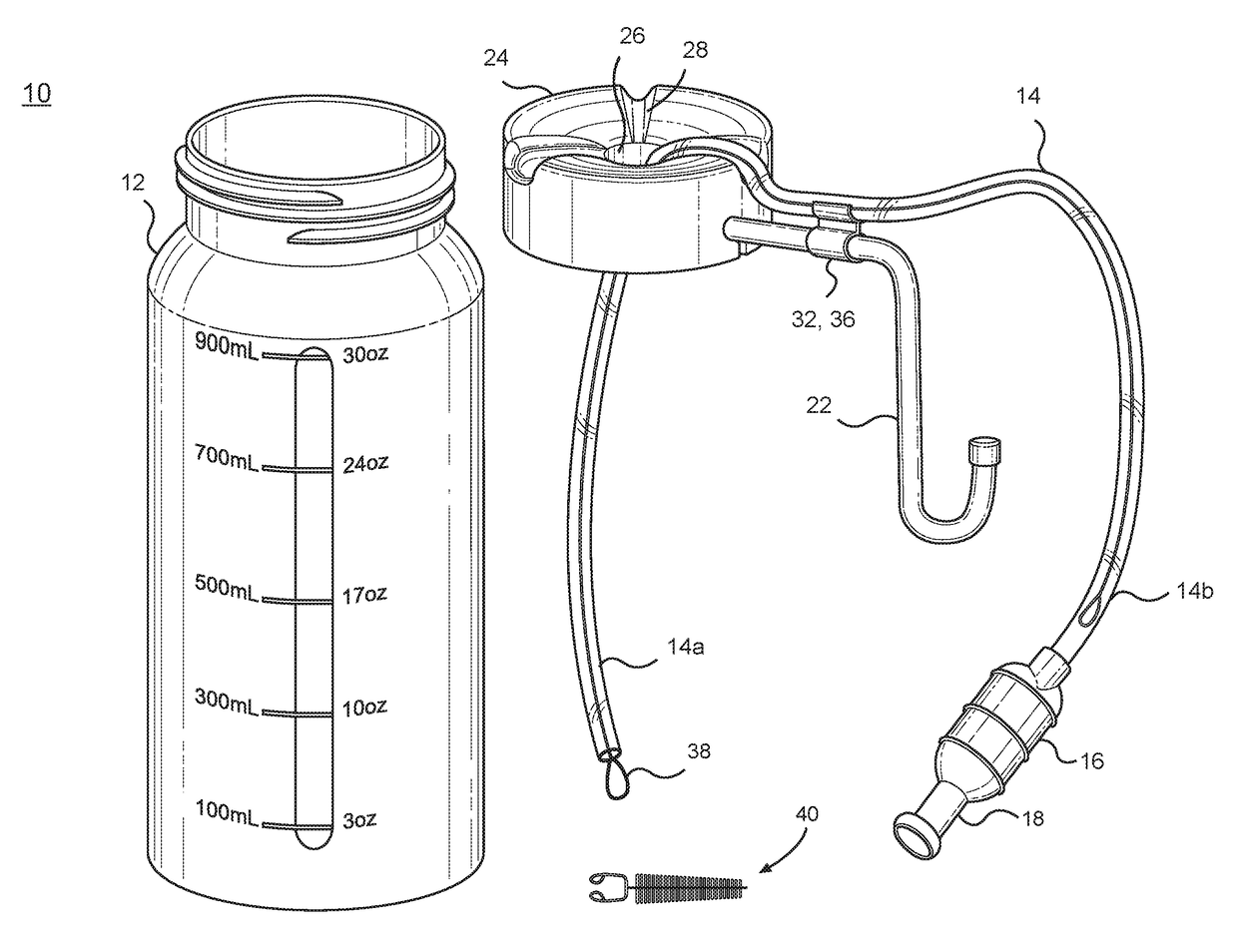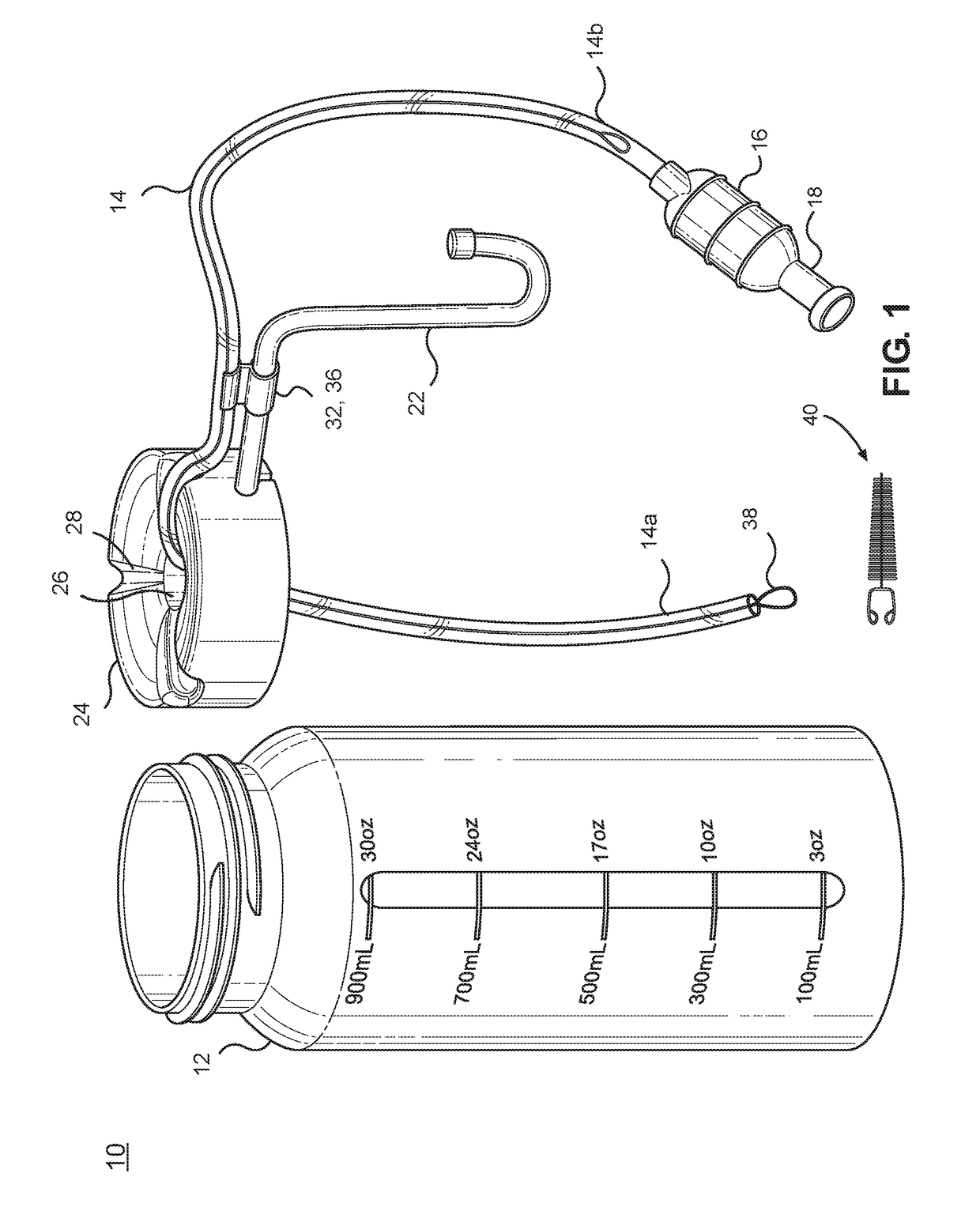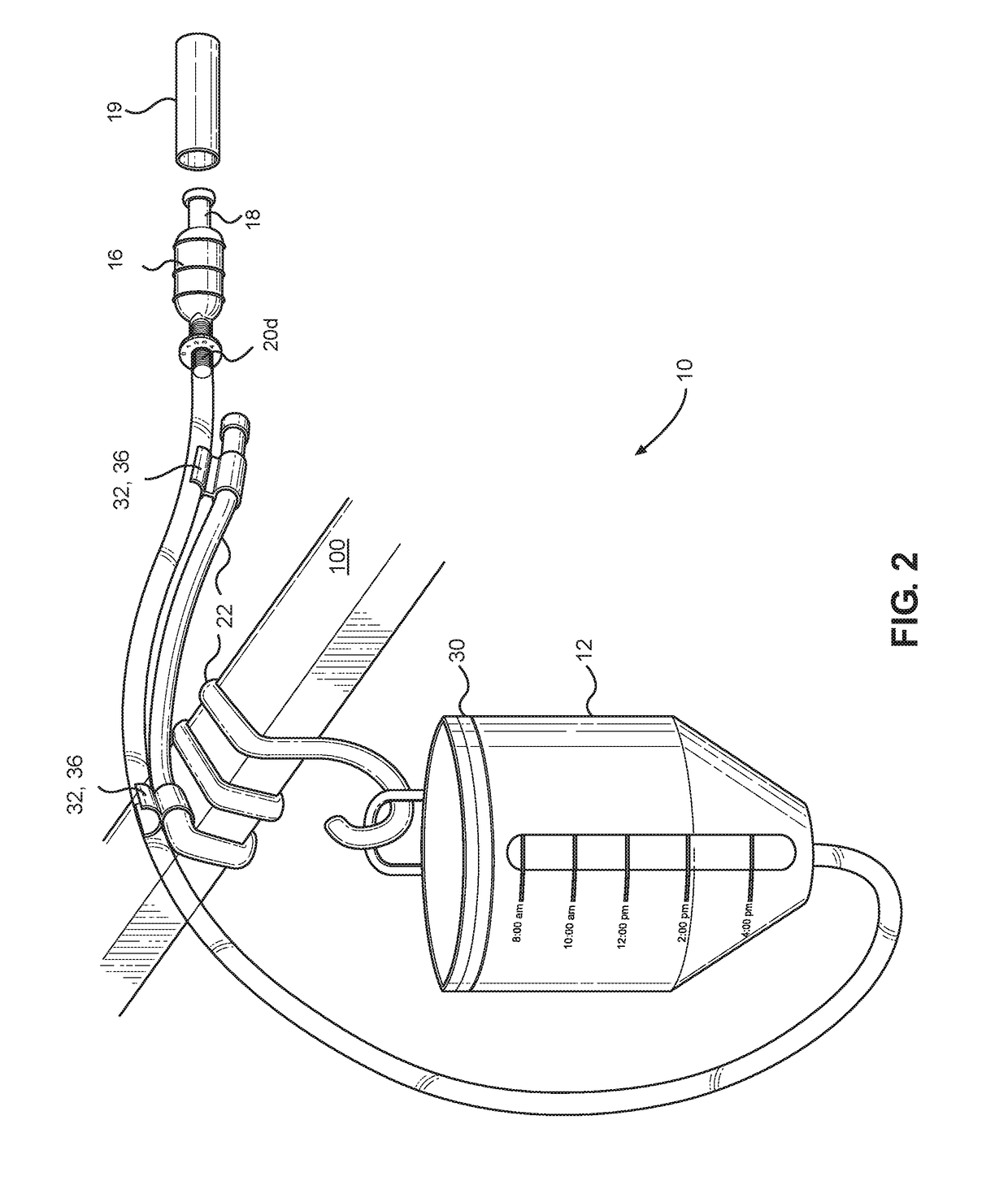Oral hydration system
a hydration system and oral technology, applied in the field of oral hydration system, can solve the problems of people's difficulty in staying adequately hydrated, constant concern and problem of dehydration, and is especially vulnerable to dehydration, so as to maintain proper hydration, reduce the mobility of individuals or strength, and improve the effect of hydration
- Summary
- Abstract
- Description
- Claims
- Application Information
AI Technical Summary
Benefits of technology
Problems solved by technology
Method used
Image
Examples
Embodiment Construction
[0035]For clarity of disclosure, and not by way of limitation, the invention is discussed according to different detailed embodiments; however, the skilled artisan would recognize that features of one embodiment can be combined with other embodiments and is therefore within the intended scope of the invention.
[0036]Unless defined otherwise, all technical and scientific terms used herein have the same meaning as is commonly understood by one of ordinary skill in the art to which this invention belongs. If a definition set forth in this document is contrary to or otherwise inconsistent with a well-accepted definition set forth in the art, the definition set forth in this document prevails over a contradictory definition.
[0037]The term “proximal” and “proximate” as used herein refers to a position which is nearest to the patient receiving hydration through the mouthpiece. The mouthpiece is proximate to the supply tube, which is proximate to the reservoir since fluid travels from the re...
PUM
 Login to View More
Login to View More Abstract
Description
Claims
Application Information
 Login to View More
Login to View More - R&D
- Intellectual Property
- Life Sciences
- Materials
- Tech Scout
- Unparalleled Data Quality
- Higher Quality Content
- 60% Fewer Hallucinations
Browse by: Latest US Patents, China's latest patents, Technical Efficacy Thesaurus, Application Domain, Technology Topic, Popular Technical Reports.
© 2025 PatSnap. All rights reserved.Legal|Privacy policy|Modern Slavery Act Transparency Statement|Sitemap|About US| Contact US: help@patsnap.com



